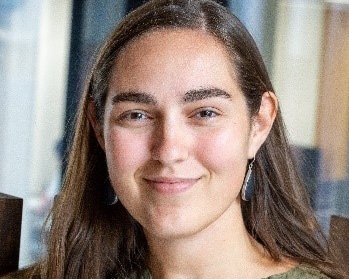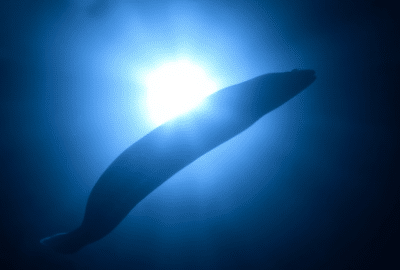Why are we searching for water on the moon?
Wednesday 31st Mar 2021, 11.07am
The moon may be the closest planetary body to us, but we still have a lot to learn about it. For example, what is the water-cycle like on an airless body such as the moon? How much water can be found there, and could we one day utilise this water for space exploration? In this episode of the Big Questions Podcast, we chat to Dr Katherine Shirley, a planetary scientist at the University of Oxford who is also a member of the science team for NASA’s Lunar Trailblazer mission. A hydroponic station on the moon? Maybe it’s not just sci-fi fantasy…
Emily Elias: Hear that? That is the sound of Mars from NASA’s Perseverance mission. Right now it’s all about Mars, but there is a plan to go back to our OG planetary bestie, the Moon. There are some very smart minds at the University of Oxford that are working on a project to examine the surface of this giant rock. So, on this episode of the Oxford Sparks Big Questions podcast, we are asking: why are we searching for water on the Moon?
Hello, I’m Emily Elias, and this is the show where we seek out the brightest minds at the University of Oxford and we ask them the big questions. For this one, we have dialled up a researcher with the Moon on her mind.
Katherine Shirley: My name is Dr Katherine Shirley. I am a planetary scientist who mainly studies rocks on the Moon, and I do that through laboratory studies and also remote-sensing studies.
Emily: So, you are working for a NASA mission right now?
Katherine: Yes. I am on the science team for the new Lunar Trailblazer mission that’s going to be launching in a couple years, which is very exciting. It’s a small mission. It has two instruments, and our main goal is to look for water on the Moon.
Gene Cernan: It’s a rock composed of many fragments, of many sizes and many shapes.
Emily: So, a quick jump into the old timeline of life. The last time man was on the Moon, it was Apollo 17 in 1972.
Male 1: And the final word from the last man on the Moon.
Gene Cernan: What I believe history will record: that America’s challenge of today has forged man’s destiny of tomorrow.
Emily: Now, if you didn’t quite catch that, that was astronaut Gene Cernan, saying, “America’s challenge of today has forged man’s destiny of tomorrow.” So, 49 years later, Katherine is working on tomorrow.
Katherine: We still actually have a lot of questions about the Moon, which is interesting because it’s the planetary body that’s closest to us. We’ve been there, but we still have a lot that we need to figure out about it, especially because we were only on one side of the Moon, so one of the big questions is, if we go to the far side, what’s over there? How different is it?
But also what resources are there? Especially if we want to continue Solar System exploration, what can we learn from being on the Moon, and maybe how could we use it, possibly, in the future, as either some kind of resource or, maybe, have a Moon station, something like that?
Emily: We already know that there is water on the Moon, but, outside of that, what is our knowledge like about this water?
Katherine: Right, so we do know that there is some water on the Moon, through a few different missions, actually. We know, one, that it’s in the form of ice at the poles, mostly from the LCROSS mission.
We basically just wanted to hit the Moon and have a lot of material being expelled from the surface so we can measure the amount of water there. We know that there is some water ice there, and that would be very valuable for the future.
We also have detected, with some other instruments, that there is water in other regions of the Moon, so we want to try to figure out exactly what form the water is in across the Moon. We want to be able to figure out how much is there, again if we want to use this as a resource, but also just in general. This is a really interesting science question, figuring out the lunar water cycle.
If you think about the water cycle on Earth, we’re quite familiar with that. We have all different forms of water. We’ve got liquid in the oceans and everything, which evaporates and we get clouds. We get rain, all these types of things, but trying to figure out how a water cycle works on a planet that doesn’t have an atmosphere is a really interesting, new field that we’re trying to think about. So, what are the sources of that water, and how are we going to lose it or sequester it, that sort of thing?
Emily: Enter the Lunar Trailblazer. It’s set to launch 2025, and it’s a satellite that’ll orbit the Moon and scan the surface of it, in the hunt for information about water and the molecules that make up water. Katherine is a part of a team that is working on a sensor that’ll help take these accurate measurements of the surface.
Katherine: The Trailblazer mission will have two instruments. It has the Lunar Thermal Mapper, which Oxford is building, which will measure the temperature. It also has the HVM3, which is the High-Resolution Volatiles Moon Mineralogy Mapper.
Emily: What does that mean? (Laughter)
Katherine: I know. I hope I got that acronym right. Basically, it means we’re looking for a couple different types of molecules, but our main focus here is water, but with that instrument we’re going to look within a specific wavelength range of light. It’s going to measure reflected light, so, when the sun shines on the Moon’s surface, the light that’s reflected back, that’s what it’s measuring.
Water absorbs light in specific ways that we know and have well documented. So, what we’re going to do is use that reflected light that comes back, and find exactly where those absorptions are, to determine what type of water it is, whether it’s ice or molecular. Coupled with those temperature measurements, we can try to figure out how much is actually there.
Emily: You guys are really good at making these types of sensors, right? This is like Oxford’s space bread and butter.
Katherine: Yes, Oxford has done a lot of work making these thermal radiometers. They’ve flown on quite a few different missions, so we have a lot of heritage in making really good detectors for temperature.
Emily: What does this one actually look like?
Katherine: It’s a little bit bigger than a shoe box, I would say. (Laughter) The whole mission in general, with both instruments, is going to be, kind of, washing machine size, I guess, if you think of it that way. So, we have to have both instruments on that, and all the thermal control apparatus and everything like that, too, to maintain the instrumentation.
Emily: What stage are you guys at in making your sensor?
Katherine: We have the first model put together, so we’re running a lot of tests on what we have currently. We have to do a lot of testing before this actually gets added to the full mission, including temperature tests, calibration tests, make sure that it’s measuring what we want it to really be measuring, and figuring out whether or not it has the right thermal design.
If you put something in space, that’s a really harsh environment. You’ve got a lot of radiation to deal with. It’s very cold in space, so you have to figure out that. If you freeze your phone, it’s not going to work really well, right? So, these are some of the considerations we have to take into account.
Again, Oxford is great at building these things. We have been doing this for a while, so we have those really well figured out, but we have to run the tests to make sure that this is going to pass everything.
Emily: Obviously, we’re in a pandemic, which is not ideal if you’re working on a team. How has that affected you guys, because I know 2025 sounds really far away, but, in prep terms, that has got to be a fast deadline?
Katherine: Right. The pandemic has created some delays, I guess, in getting everything together. One, just forgetting some of the pieces shipped. We’ve also had some, you know, just issues going into work. So, we had to do a lot to make sure all of our labs were up to code and that we had good protocols in place to have limits on the amount of people in there, keeping our social distancing going.
A lot of this work does take place in a cleanroom, so that means that you’ve got coverings all over you. You’ve got a mask on anyways, so on that it wasn’t too difficult to change that part, (Laughter) but making sure that we only had a few people in at a time was important. So, we’ve been able to get back into the lab and have progress going on, on building this instrument.
Emily: So, if we know more about the water on the Moon, how it got there, how it’s created, what can we practically do with this information? Are we talking about, like, colonising the Moon?
Katherine: The Moon is – would be – a great place to have some kind of base to do further missions into the solar system, for multiple reasons. It’s close to Earth, so it’s, kind of, a semi-safety net. It has much lower gravity, so, if we were to launch from the Moon instead of Earth, it would be a lot easier.
If there is water already there, that means we don’t have to launch it from Earth to the Moon, which is difficult and very expensive. If we don’t have to have water as part of our payload, that will make things a lot easier.
Emily: So, one day, could we have, like, a bottle of Moon water or our very own Moon-grown lettuces?
Katherine: That would be really cool. I think that that would probably be sent away. I don’t think we would be getting that Moon lettuce here on Earth. I think Earth lettuce is probably at a good enough standard, (Laughter) but it would be really cool to be able to do that and have some kind of, like, hydroponic station on the Moon. That would be really cool.
Emily: It would be very cool. This podcast was brought to you by Oxford Sparks from the University of Oxford, with music by John Lyons and a special thanks to Katherine Shirley and the NASA archive.
Please, rate and review this podcast. Or, better yet, if you like it, just tell a friend. That goes a long way for us. You can find us on the Internet. We are ‘@OxfordSparks’, or we’ve got a website: ‘oxfordsparks.ox.ac.uk’. I’m Emily Elias. Bye for now.





